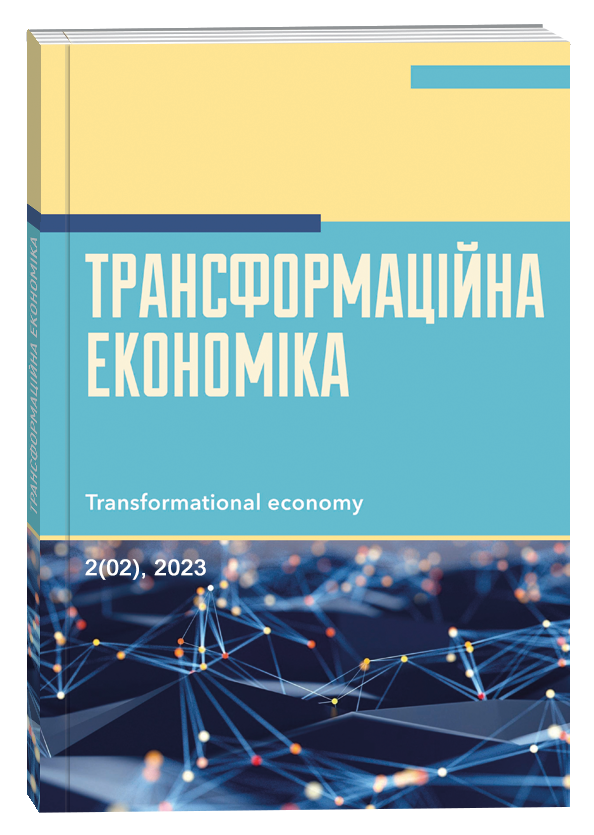STUDY OF THE INFLUENCE OF PERSONNEL TECHNOLOGIES ON THE EFFICIENCY OF EMPLOYEES AND THE CULTURE OF THE ORGANIZATION
Abstract
Reviewing published research, news, and business journal articles from a theoretical perspective, new monitoring and surveillance technologies affect employees' work and personal lives, which is vital to study and brings new ideas for further research and practice. Thus, it is extremely important to study new technologies and their impact on employees' work attitudes. The traditional set of human resource management practices as an important source must create a flexible and innovative vision to maintain significant effects in unique organizational strategies that distinguish purposeful employees, wherever continuous innovation is essential to achieve organizational sustainability. The competitive and unpredictable situation requires new human resource management practices to solve problems in organizations in order to improve their climate, promote and increase the efficiency of innovation. This shifts the entire scenario to technological processes such as e-recruitment, training, reward systems, employee participation in decision-making and teamwork closely related to organizational effectiveness and HR outcomes. In the paper the theoretical aspects of formation and development of the personnel management system at the enterprise, its functions and types are considered. Research of the concept of «personnel management», given by foreign and domestic authors, was investigated and own concept was formed based on we research. The research part of the work was based on analyzes of the external and internal environment of the enterprise, personnel audit of the company, diagnostics conducted by surveys, as well as comparing data found by comparing the existing personnel management system with the expectations of company staff and environmental requirements. The existing personnel management system of the enterprise is effective and leads the organization to achieve its goals, as the company's employees identify themselves with the whole enterprise and understand all the responsibilities that lie with them in obtaining the overall result. Accordingly, employees pay attention to the quality and efficiency of their work, which leads to a positive impact on LPP S.A.
References
Волянська-Савчук Л. В. Використання інноваційних персонал-технологій в управлінні персоналом на підприємствах, Економiка i органiзацiя управлiння. 2019. № 1. URL: https://jeou.donnu.edu.ua/article/view/7063 (дата звернення: 16.02.2023).
Дубініна Я.П. Основи кадрового менеджменту. 2017. URL: http://semestr.com.ua/book_102.html (дата звернення: 16.02.2023).
Третяк О.П. Сучасні персонал-технології у системі управління персоналом на підприємстві. Науковий вісник НЛТУ України. 2014. URL: http://elar.khmnu.edu.ua/jspui/handle/123456789/6550 (дата звернення: 17.02.2023).
Boxall, P. F. (2007) The goals of HRM, in (eds) P Boxall, J Purcell and P Wright, Oxford Handbook of Human Resource Management, Oxford, Oxford University Press, pp 48-67. URL: https://www.academia.edu/11672915/The_Oxford_Handbook_of_Human_Resource_Management (дата звернення: 17.02.2023).
Guest, D. E. (1987) Human resource management and industrial relations, Journal of Management Studies, 24 (5), pp 503-521. URL: https://onlinelibrary.wiley.com/doi/abs/10.1111/j.1467-6486.1987.tb00460.x (дата звернення: 15.02.2023).
Katou, A.A. (2012). Investigating reverse causality between human resource management policies and organizational performance in small firms. Management Research Review, 35(2). URL: https://ideas.repec.org/a/eme/mrrpps/v35y2012i2p134-156.html (дата звернення: 15.02.2023).
Osterby, B and Coster, C (1992) Human resource development – a sticky label, Training and Development, April, pp 31-32. URL: https://www.jstor.org/action/doBasicSearch?Query=Osterby&so=new (дата звернення: 15.02.2023).
Pocztowski, A. (2003). Zarządzanie zasobami ludzkimi. Warszawa: PWE. URL: https://core.ac.uk/download/pdf/229242104.pdf (дата звернення: 18.02.2023).
Rostkowski, T. (2005). Strategia personalna. In T. Rostkowski (ed.), Nowoczesne metody zarządzania zasobami ludzkimi. Warszawa: Difin. URL: https://docplayer.pl/4634193-Strategia-personalna-przedsiebiorstwa-dr-tomasz-rostkowski-katedra-rozwoju-kapitalu-ludzkiego.html (дата звернення: 18.02.2023).
Storey, J (2007) What is human resource management? in (ed), J Storey, Human Resource Management: A critical text, 3rd edn, London, Thompson Learning, pp 3-19. URL: https://journals.sagepub.com/doi/abs/10.1177/017084069601700115 (дата звернення: 18.02.2023).
Szczepańska, K., & Kosiorek, D. (2015). Badanie kultury organizacyjnej. In E. Skrzypek, A. Piasecka, A. Kowalska (eds.), Jakość w zarządzaniu organizacją. Lublin: Uniwersytet Marii Curie-Skłodowskiej. URL: https://bazekon.uek.krakow.pl/rekord/171489613 (дата звернення: 18.02.2023).
Volyansʹka-Savchuk, L.V. (2019) Vykorystannya innovatsiynykh personal-tekhnolohiy v upravlinni personalom na pidpryyemstvakh [The use of innovative personnel technologies in personnel management at enterprises]. Ekonomika i orhanizatsiya upravlinnya. Vol. 1. Available at: https://jeou.donnu.edu.ua/article/view/7063 (accessed 16 February 2023).
Dubinina, Yа.P. (2017). Osnovy kadrovoho menedzhmentu [Basics of personnel management]. Available at: http://semestr.com.ua/book_102.html (accessed 16 February 2023).
Tretyak, O.P. (2014) Suchasni personal-tekhnolohiyi u systemi upravlinnya personalom na pidpryyemstvi [Modern personnel technologies in the personnel management system at the enterprise]. Naukovyy visnyk NLTU Ukrayiny. Available at: http://elar.khmnu.edu.ua/jspui/handle/123456789/6550 (accessed 17 February 2023).
Boxall, P. F. (2007) The goals of HRM, in (eds) P Boxall, J Purcell and P Wright, Oxford Handbook of Human Resource Management, Oxford, Oxford University Press, pp 48-67. Available at: https://www.academia.edu/11672915/The_Oxford_Handbook_of_Human_Resource_Management (accessed 17 February 2023).
Guest, D. E. (1987) Human resource management and industrial relations, Journal of Management Studies, 24 (5), pp. 503-521. Available at: https://onlinelibrary.wiley.com/doi/abs/10.1111/j.1467-6486.1987.tb00460.x (accessed 15 February 2023).
Katou, A.A. (2012). Investigating reverse causality between human resource management policies and organizational performance in small firms. Management Research Review, 35(2). Available at: https://ideas.repec.org/a/eme/mrrpps/v35y2012i2p134-156.html (accessed 15 February 2023).
Osterby, B. and Coster, C. (1992) Human resource development – a sticky label, Training and Development, April, pp 31-32. Available at: https://www.jstor.org/action/doBasicSearch?Query=Osterby&so=new (accessed 15 February 2023).
Pocztowski, A. (2003). Zarządzanie zasobami ludzkimi. Warszawa: PWE. Available at: https://core.ac.uk/download/pdf/229242104.pdf (accessed 18 February 2023).
Rostkowski, T. (2005). Strategia personalna. In T. Rostkowski (ed.), Nowoczesne metody zarządzania zasobami ludzkimi. Warszawa: Difin. Available at: https://docplayer.pl/4634193-Strategia-personalna-przedsiebiorstwa-dr-tomasz-rostkowski-katedra-rozwoju-kapitalu-ludzkiego.html (accessed 18 February 2023).
Storey, J (2007) What is human resource management? in (ed), J Storey, Human Resource Management: A critical text, 3rd edn, London, Thompson Learning, pp 3-19. Available at: https://journals.sagepub.com/doi/abs/10.1177/017084069601700115 (accessed 18 February 2023).
Szczepańska, K., & Kosiorek, D. (2015). Badanie kultury organizacyjnej. In E. Skrzypek, A. Piasecka, A. Kowalska (eds.), Jakość w zarządzaniu organizacją. Lublin: Uniwersytet Marii Curie-Skłodowskiej. Available at: https://bazekon.uek.krakow.pl/rekord/171489613 (accessed 18 February 2023).


